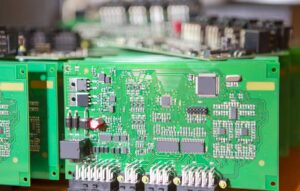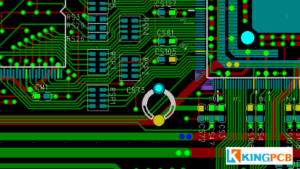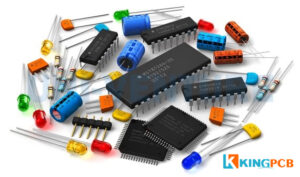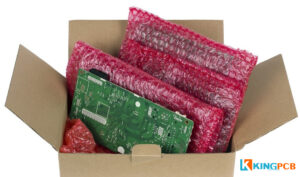Guidelines for Reducing PCB Costs
2022-09-27In order to reduce the total cost of PCB manufacturing, several key design factors need to be considered prior to the first build.
SMT and PTH
Surface mount technology (SMT) for PCB assembly is usually the least expensive and more mature process for manufacturing designs, reducing or removing all plated through-hole (PTH) components where possible.
PTH components are typically more robust than SMT components, making them ideal for connectors. PIH technology (Paste in hole) is a process where the plated through-hole in and around the PCB is. The PCB can be connected to both the hole and the SMT component after only one reflow process. PIH makes the processing of double-sided circuit boards easier and cheaper.
PIH requires two design prerequisites
Firstly, the insulation of the assembly must be able to withstand lead or lead-free reflow temperatures.
Secondly, the vertical and horizontal gaps around the leads must be large enough to allow a sufficient amount of printed solder paste.
For designs with relatively few components, use single-sided PCB SMT where possible to reduce assembly complexity. Avoiding rework of assemblies due to unnecessary complexity and component damage delays production volumes and increases costs.
Layout
The size of the PCB will directly affect its cost, the sizing determines the number of systems per panel. The dimensions of the layout should be as small as possible, taking into account the minimum number of layers within the PCB and for grounding. Blind holes buried within the PCB are often used to minimize the space impact on the top and bottom planes.
BOM components
Each component in the Bill of Materials (BOM) should provide unique value to the system. Check each component carefully to see if the system will not operate properly if a component is missing.
Tolerances
Passive component suppliers segment their products by offering multiple tolerance ranges for capacitors, resistors, inductors, and others (e.g., 1%, 5%, 10%, and 20%). This helps them to sell the total capacity of their plants at the highest price the customer is willing to pay for the tolerance accuracy achieved by their manufacturing.
Power requirements and sizing
Passive components are rated according to their maximum power consumption, e.g., ¼ watt resistors. The maximum power requirement required for each passive component is assessed and only the required criteria are included in the BOM. This is usually also driven to the smallest size component.
Active circuit performance
The best systems may require the highest performing active components. When clock frequencies, switching speeds, signal-to-noise ratios, or high gain drive differentiation, there is no substitute for the highest performance semiconductors. However, for those applications where this is not the case, make sure the system is not 'over-engineered'.
Memory size
Although memory is almost always available in 2n bit sizes, there is no extra value in unused empty memory. Compress firmware or compute memory as much as possible and use only the minimum memory size required by the system.
Purchase Quantities
Whether sourcing larger quantities of components internally or with your PCB turnkey solution, consider working closely with your system's logistics planner. Once your system is in stable production at a proven operating rate, buying larger quantities may help reduce component pricing in the long run. Review component costs from as many distributors as possible to get the best pricing.
Since many designs go through multiple tests and debug iterations before they are ready for final production, the embedded test pattern circuitry in the first system design may no longer be valuable in production. Unless test points or debug circuits are required to observe behavior during or after production, consider removing test patterns or non-essential features from the production version of the system.
Packaging
Work with a trusted PCB Assembly factory to understand how component packaging formats can effectively reduce costs. While tape and reel are usually the most common packaging, some older, vintage analog components may still be supplied in tube format only. Larger and more complex semiconductors may also be available in tray format only. Understand the implications of these design and ordering trade-offs for your manufacturing facility.
Conclusion
Before handing over a new project to a PCB manufacturer for production, consider all the ways in which costs can be reduced during the design phase. There may be trade-offs between cost and performance that need to be appropriately discussed with the PCB design and manufacturing teams to ensure maximum efficiency and flexibility are achieved in the manufacturing process







